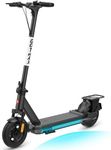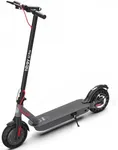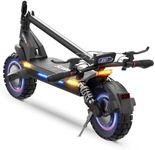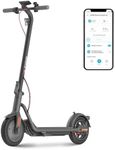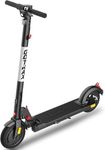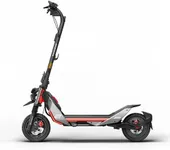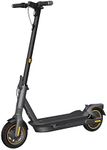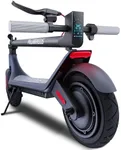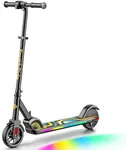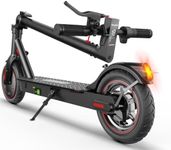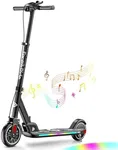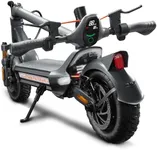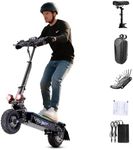Buying Guide for the Best E Scooter For Adults
Choosing an e-scooter for adults can be exciting, but it's important to focus on your personal needs and how you plan to use the scooter. Think about where you'll ride most often—city streets, bike paths, or rougher terrain—and how far you need to travel on a single charge. Comfort, safety, and ease of use should also be top priorities. By understanding the key features and how they relate to your lifestyle, you can find an e-scooter that fits you perfectly.Motor Power (Wattage)Motor power, measured in watts, determines how strong and fast your e-scooter can go, especially when climbing hills or carrying heavier riders. Lower wattage (around 250-350W) is suitable for flat city rides and lighter users, offering moderate speed and efficiency. Mid-range motors (350-500W) provide a balance of speed and hill-climbing ability, making them good for mixed urban environments. Higher wattage (500W and above) is best for heavier adults, steeper hills, or those who want more acceleration and speed. Choose based on your weight, the terrain you'll ride on, and how much power you want.
Battery RangeBattery range tells you how far you can travel on a single charge, usually measured in kilometers or miles. Shorter ranges (up to 20 km/12 miles) are fine for quick commutes or errands, while mid-range batteries (20-40 km/12-25 miles) suit most daily needs. Long-range batteries (over 40 km/25 miles) are ideal for longer commutes or if you don't want to charge often. Think about your typical trip distance and add a little extra for unexpected detours or changes in route.
Top SpeedTop speed is how fast the scooter can go, usually listed in kilometers or miles per hour. Lower speeds (up to 20 km/h or 12 mph) are safer and often enough for crowded city areas. Mid-range speeds (20-30 km/h or 12-18 mph) offer a good balance for most adults, while higher speeds (over 30 km/h or 18 mph) are for experienced riders or those traveling on open roads. Consider your comfort level, local speed regulations, and where you'll be riding most often.
Weight CapacityWeight capacity is the maximum load the scooter can safely carry, including the rider and any gear. Most adult e-scooters support 100-120 kg (220-265 lbs), but some heavy-duty models can handle more. It's important to choose a scooter that matches or exceeds your weight to ensure safety, performance, and battery life. Always check this spec if you're close to the limit or plan to carry a backpack or groceries.
Wheel Size and TypeWheel size and type affect ride comfort and stability. Smaller wheels (under 8 inches) are lighter and more portable but can struggle with bumps and rough surfaces. Medium wheels (8-10 inches) offer a good balance for city riding, while larger wheels (over 10 inches) provide a smoother ride on uneven terrain. Pneumatic (air-filled) tires absorb shocks better, while solid tires are puncture-proof but less cushioned. Choose based on your typical riding surface and how much comfort you want.
SuspensionSuspension helps absorb shocks from bumps and rough roads, making your ride smoother. Some scooters have no suspension, which is fine for smooth pavements. Basic front or rear suspension adds comfort for occasional rough patches, while dual suspension is best for frequent rides on uneven surfaces. If you value comfort or have sensitive joints, look for a model with good suspension.
Portability (Weight and Folding Mechanism)Portability is about how easy it is to carry and store your scooter. Lighter scooters (under 12 kg/26 lbs) are easier to carry up stairs or onto public transport, while heavier models may be more stable but harder to move. A good folding mechanism lets you quickly collapse the scooter for storage or transport. Think about your daily routine—if you need to carry your scooter often, prioritize lighter weight and easy folding.
Braking SystemThe braking system is crucial for safety. E-scooters may have electronic, disc, drum, or foot brakes. Electronic brakes are low-maintenance but less powerful, while disc and drum brakes offer stronger stopping power, especially at higher speeds or on hills. Foot brakes are simple but less effective for fast riding. Choose a braking system that matches your speed, riding environment, and need for quick stops.
Lighting and VisibilityGood lighting and reflectors help you see and be seen, especially in low-light conditions. Look for bright front and rear lights, and consider additional reflectors or side lights for extra safety. If you plan to ride at night or in busy areas, strong lighting is essential for your visibility and safety.
